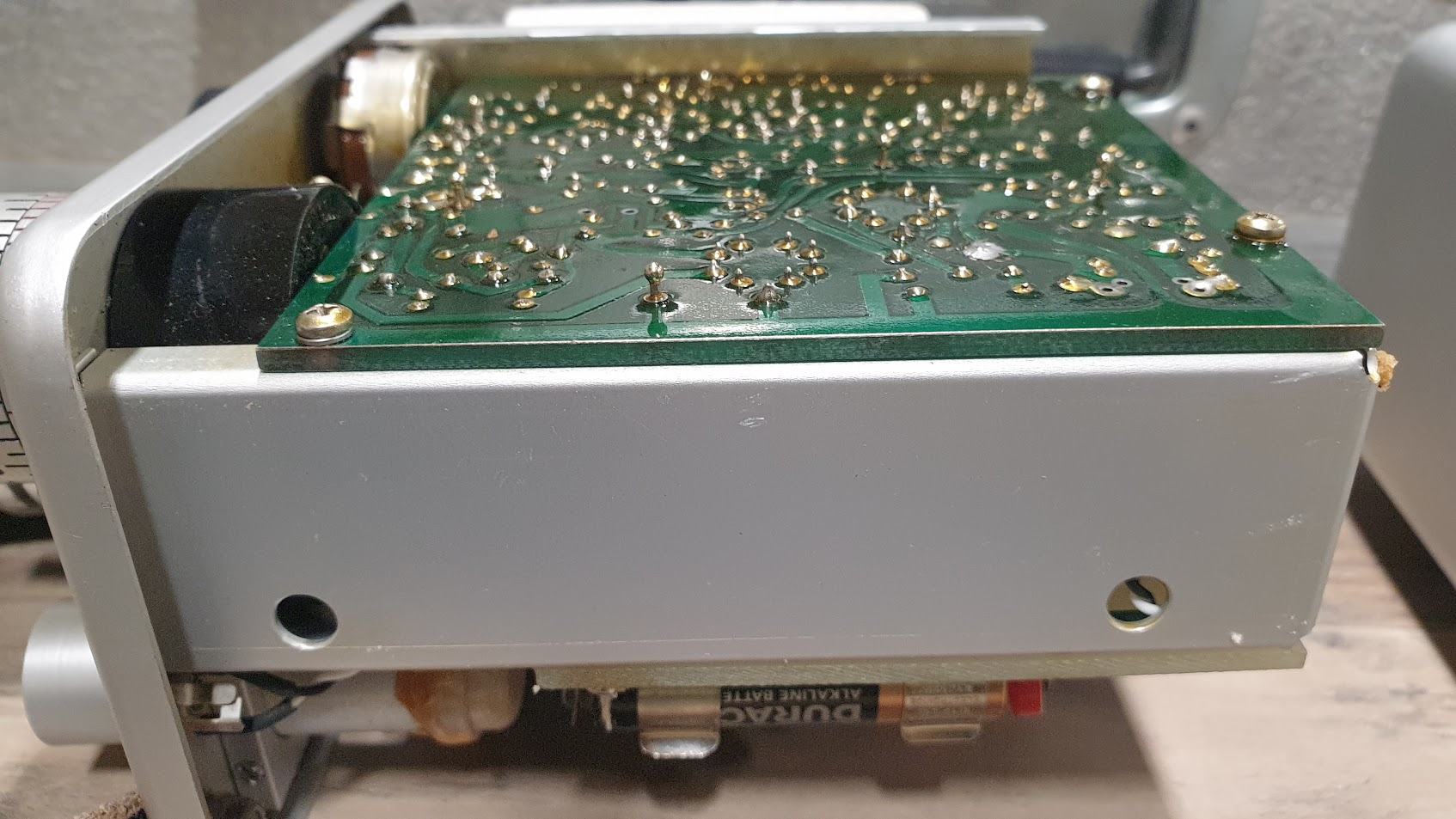I appreciate your caveat about peak load. Fortunately for this device it is largely irrelevant. It's so old school and analogue that there isn't a standby draw -- it's either on or off. Its operational time is measured in days on a single 9V.
It might be interesting, so I'll describe the instrument. Starting with some VLF background:
There are a number of VLF stations scattered around the world -- for example station id NAA in Culter, Maine (24.0kHz) -- used to communicate with their submarines while submerged. If they only transmitted when they had something interesting to say to the subs, that would be useful information to an enemy. So they have to transmit continuously (except for on scheduled maintenance days for the transmitters). These are very powerful huge antennas, often spanning entire valleys -- after all, the wavelength at 24kHz is enormous. Different stations have different frequencies and we know about most of them.
At a sufficient distance away from these antennas, all incoming signals are polarized due to reflecting off the ionosphere. These radio waves pass over linear conductors in the ground which will distort the polarization. What we're effectively measuring is the distortions in these incoming radio waves to map the locations (and orientations) of linear conductors (natural antennas) in the ground, up to about 250m below surface.
So this device is used to measure the incoming signal direction and polarization. It does so by setting up a harmonic oscillation on the device and emitting a tone. There's a couple of magnetic coils on the device, and as you swing the device about, the received signal from the transmitter and the onboard oscillator will constructively or destructively interfere, changing the tone. You note the direction the tone is the strongest using a compass and inclinometer (both analogue) and write it down in a notebook. Then move to your next position and repeat.
Prospectors have been using this for five decades at least.
But as you can see, not a complicated thing from an electronics perspective. The only complicated thing is tuning the on-board oscillator properly.

Sometimes people get caught up trying to find exact matches for software, when instead it's a combination of tools that gets the job done on another OS. The annoying thing is learning new toolsets -- but it's only annoying until you know them.